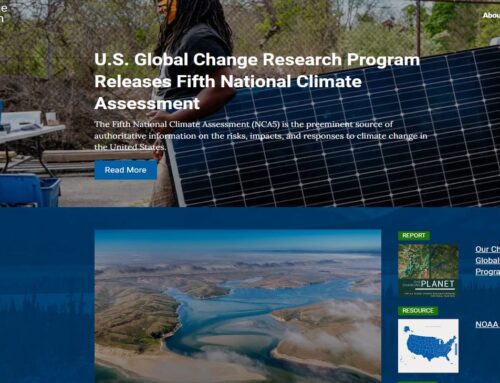New Trump Administration Directives to Repeal Environmental Regulations En Masse Make ‘No
April 12, 2025
Environmental lawyers say two new White House directives—designed to greatly expand executive power to strike down federal energy and environmental regulations—are not likely to hold up in court and represent an attempt to move far beyond the established boundaries of presidential authority.
“I do not think this even comes close to passing the test for legality,” said Andres Restrepo, a senior attorney in the Sierra Club’s Environmental Law Program, of the April 9 executive order, “Zero-Based Regulatory Budgeting to Unleash American Energy.”
This executive order directs the Environmental Protection Agency, the Department of Energy and other key federal agencies to “incorporate a sunset provision into their regulations governing energy production.” Once inserted, the provision would repeal that regulation within one year unless an extension is granted. Among those targeted are rules authorized under the Endangered Species Act.
In a press release, the Center for American Progress, a public policy group, warned that enacting this order would “create chaos, uncertainty, and a nightmare of administrative procedures to justify almost every individual regulation relating to energy and environment.”
“To just arbitrarily have a cut-off date for all regulations issued, regardless of what the statute says, and regardless of whether there’s an evidentiary basis for it—that is simply unlawful,” Restrepo said. “This is really just not how our laws work.”
Restrepo said the order may be inspired by an Idaho law that includes a “sunsetting” provision stating that regulations expire automatically after one year unless they are extended by the state legislature.
But the Administrative Procedure Act, which governs how federal agencies write and enforce regulations, contains no such language. Federal agencies create regulations based on laws passed by Congress.
“It makes no sense. It is impossible to implement. It reflects a complete lack of understanding of how government works,” said Ari Peskoe, the director of the Electricity Law Initiative at the Harvard Law School Environmental and Energy Law Program.
Peskoe theorized that the administration is “enshrining a misguided quote” from billionaire Trump donor Elon Musk about his support for applying a “zero-based budgeting” framework to the federal government. Zero-based budgeting is a financial strategy Musk employed at Twitter that forces an organization to constantly re-justify its expenses.
When reached for comment about the legality of the order, a White House press representative pointed to an administration fact sheet for “Zero-Based Regulatory Budgeting.” That says the order “will unleash American energy innovation, which has been frozen in the 1970s. Regulations from the Carter Administration should not govern energy production today.”
From the fracking boom to advances in solar and wind technology, the American energy landscape is very different today than it was 50 years ago. Existing regulations didn’t stop those innovations.
A presidential memo also released Wednesday, “Directing the Repeal of Unlawful Regulations,” refers to an earlier executive order, “Ensuring Lawful Governance and Implementing the President’s ‘Department of Government Efficiency’ Deregulatory Initiative.” That order required agencies to “identify certain categories of unlawful and potentially unlawful regulations within 60 days and begin plans to repeal them.” The memo lists several recent Supreme Court decisions and directs agencies to prioritize repealing any regulation “in conflict” with those decisions.
“You can’t do that. You can’t just repeal a regulation that’s on the books without holding a notice and public comment process,” Peskoe said. “If they want to do this, they’re going to inevitably lose in court.”
Under the Administrative Procedure Act, agencies must follow a specific process in order to repeal a regulation. That process involves writing a proposal based on the administrative record for that regulation, soliciting public comment on the proposal and then incorporating that feedback.
The memo says agencies can use the “good cause” exception in the Administrative Procedure Act to “dispense with notice-and-comment rulemaking.” The “good cause” exception has been narrowly defined by the courts to apply only to emergency or urgent situations “where delay could result in serious harm,” Restrepo said.
“What this presidential memorandum does is it just provides the administration with a nuke button to get rid of any rule it doesn’t like,” said Erik Schlenker-Goodrich, an attorney and the executive director at the Western Environmental Law Center.
He is concerned about what could happen if legal battles over this memo and the related executive order reach the current Supreme Court, with its conservative majority that has upended precedent before.
“The Supreme Court justices have proved very willing to use their own values to determine what the law is, rather than reading the plain language of a law and applying it to the facts of a particular situation,” Schlenker-Goodrich said. “There’s a risk, once it rises to the Supreme Court, that they will interpret what the federal government did as perfectly lawful. It will essentially expand the power of the federal government.”
If the sunsetting provision were somehow to be upheld in court, “it would be a complete free-for-all on public health and the environment,” Restrepo said. “A huge amount of the work that has been spent to protect the public health and welfare will be erased.”
He thinks that’s unlikely, but he does foresee the federal government wasting time and money to defend these directives “with little likelihood of succeeding.” Restrepo and Schlenker-Goodrich both questioned how the agencies would even be able to carry out the work outlined in these directives, given the drastic staffing cuts the new administration has made across the government.
Schlenker-Goodrich said the order and memo were part of the administration’s broader efforts to dismantle the federal government and consolidate power away from federal agencies and into the hands of the president.
“I’ve been practicing law for going on 26 years, and no administration in my lifetime has exercised authority in the abusive and wild way like the Trump administration is doing now,” he said. The administration’s policies would take the United States back to a world before landmark environmental legislation like the Clean Air Act and Clean Water Act, a world of burning rivers, smog-filled cities and polluted public lands, he said.
“It is truly a five-alarm moment,” Schlenker-Goodrich said.
About This Story
Perhaps you noticed: This story, like all the news we publish, is free to read. That’s because Inside Climate News is a 501c3 nonprofit organization. We do not charge a subscription fee, lock our news behind a paywall, or clutter our website with ads. We make our news on climate and the environment freely available to you and anyone who wants it.
That’s not all. We also share our news for free with scores of other media organizations around the country. Many of them can’t afford to do environmental journalism of their own. We’ve built bureaus from coast to coast to report local stories, collaborate with local newsrooms and co-publish articles so that this vital work is shared as widely as possible.
Two of us launched ICN in 2007. Six years later we earned a Pulitzer Prize for National Reporting, and now we run the oldest and largest dedicated climate newsroom in the nation. We tell the story in all its complexity. We hold polluters accountable. We expose environmental injustice. We debunk misinformation. We scrutinize solutions and inspire action.
Donations from readers like you fund every aspect of what we do. If you don’t already, will you support our ongoing work, our reporting on the biggest crisis facing our planet, and help us reach even more readers in more places?
Please take a moment to make a tax-deductible donation. Every one of them makes a difference.
Thank you,
Search
RECENT PRESS RELEASES
Related Post




